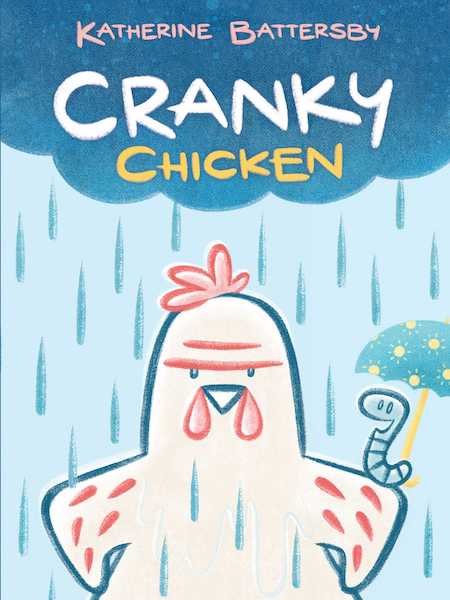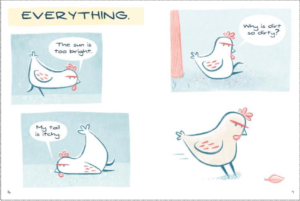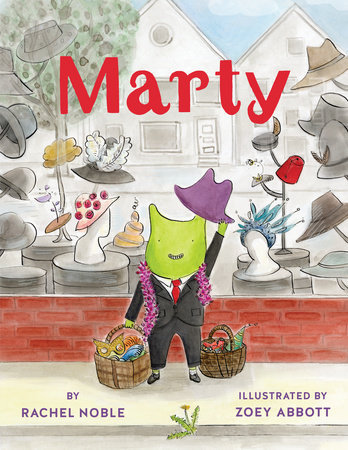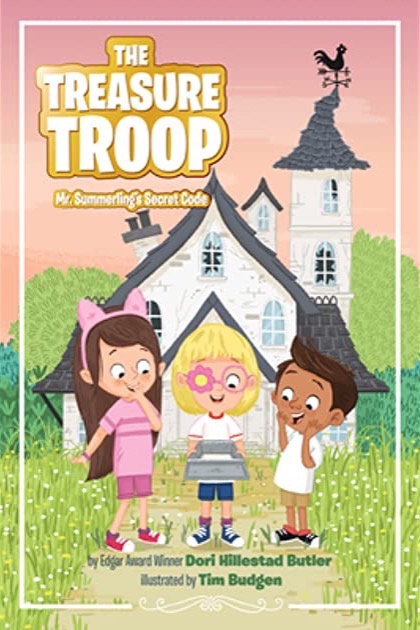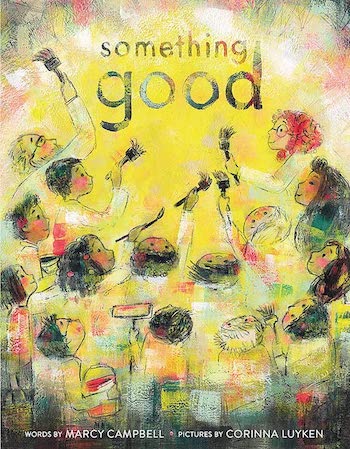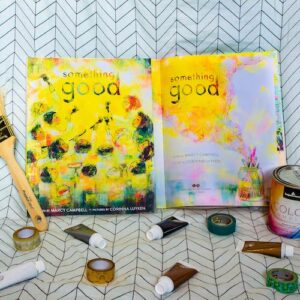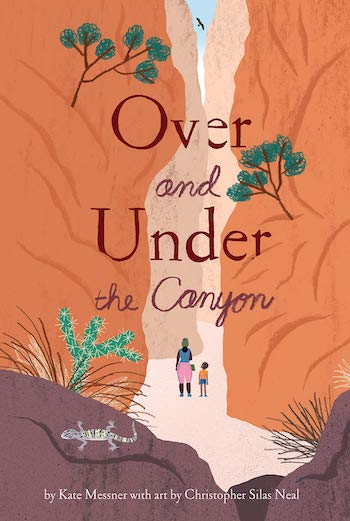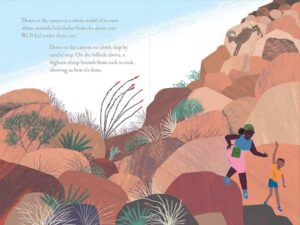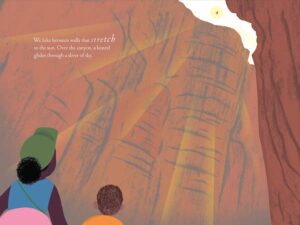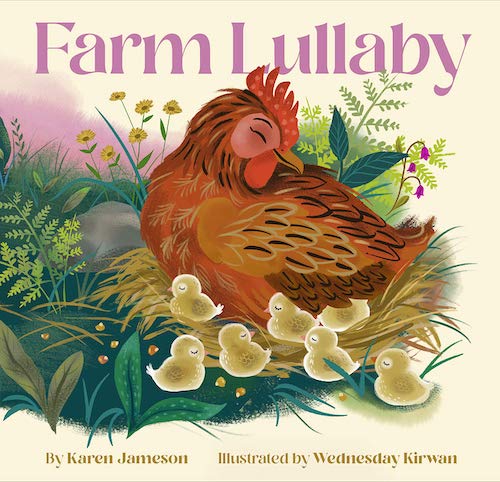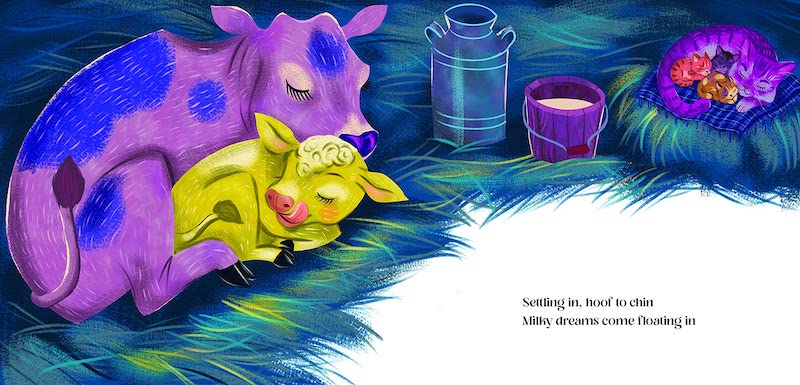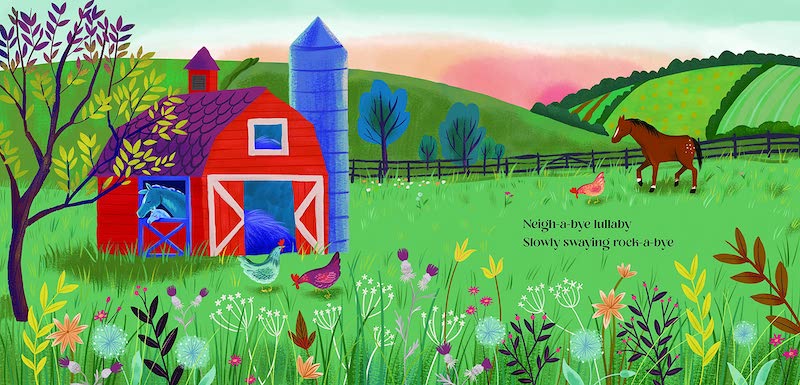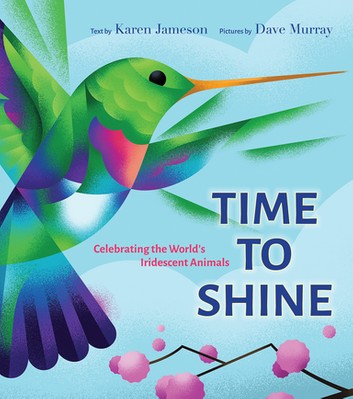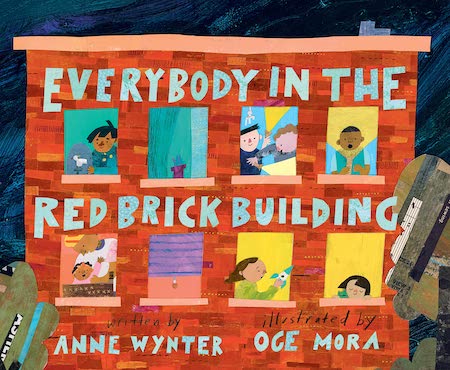
Everybody in the Red Brick Building
by Anne Wynter, illustrated by Oge Mora
Balzar & Bray | 978-0062865762
Have you read EVERYBODY IN THE RED BRICK BUILDING yet? It’s the first of many beautiful books on the way from Anne Wynter. With starred reviews from Kirkus, Book Page, Publishers Weekly, and Booklist and gorgeously illustrated by Oge Mora, with acrylic paint, gouache, china markers, pastels, patterned paper, and old book clippings, the collage art in jeweled tones provides the perfect canvas for Wynter’s rich and onomatopoetic text.
The story begins with a quiet double spread, full moon in the sky, lights out in all the windows: “Everybody in the red brick building was asleep.”
Until… with a turn of the page:
Baby Izzie sat up in her crib and howled.
WaaaAAH!
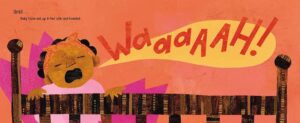
CLICK TO ENLARGE ©illustrations by Oge Mora
One-by-one, baby, parrot, children and parents, cat and car wake up! The building fills with noise until, finally…
Back on her perch,
Pepper curled up tight
and listened to the shhhh shhhh
of the street sweeper.
Kids crawl back inside their sleeping bags, wind chimes “ting ting,” quiet descends and, eventually, everyone in the red brick building falls asleep.
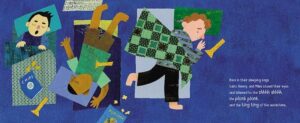
CLICK TO ENLARGE ©illustrations by Oge Mora
I’m so happy Anne agreed to visit ReaderKidZ to chat about her debut, offer a few writing tips, give readers a peek into upcoming books, and so much more!
DIANNE: Welcome Anne!
I read in a recent interview that EVERYBODY IN THE RED BRICK BUILDING was one of two picture book manuscripts you had written at the time you sent out queries to agents. But I also know that you’re a playwright and you’ve had lots of other experiences as a freelance writer, copyeditor, and content strategist.
In what ways have you found these various experiences helpful in writing picture books and understanding how the industry works?
ANNE: As a freelance writer and creative writer, one of the biggest challenges is getting started on a new project. You imagine a story in your head, but getting the first words out on paper is tough. But with freelancing, I had deadlines and I needed to move on to other assignments – plus I had to earn money! – so I learned to jump in and get started, even when I was hesitant. It’s definitely a skill I use when tackling new picture book ideas (even though I’m still scared and hesitant sometimes!)
My playwriting experience was especially helpful because it’s similar to writing picture books. For both formats, you’re writing words that are meant to be read aloud. And your words are just one step in the creative process. For theatre, the script is a jumping off point for the director, actors and designers. For picture books, your text is a jumping off point for the illustrator. You have to be okay with handing off the project to other creatives.
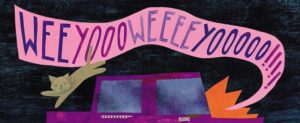
CLICK TO ENLARGE ©illustrations by Oge Mora
DIANNE: Taking it one step further, how have you found your experience as a Marketing and PR Specialist helpful as you prepared for the launch of EVERYBODY IN THE RED BRICK BUILDING?
ANNE: It definitely helped, but not as much as I thought it would. It’s still much easier to promote other people’s work than it is to promote your own. Also, things change so quickly. When I was doing publicity and marketing work, Instagram wasn’t a big thing yet and TikTok wasn’t around at all. We weren’t talking much about influencers. Some of the things I used to do probably aren’t as relevant anymore.
But having marketing and PR experience was very helpful when I was querying. Pitching something to a media outlet is a lot like querying agents. Following their directions, being professional and courteous, doing your research – it’s all such a big part of it, and I’m glad I had that experience when I started querying.
DIANNE: What was your biggest, most delightful surprise as a debut author?
ANNE: I’d heard authors and illustrators say school visits were their favorite part of being an author, but I was still surprised when it turned out to be so much fun! I’ve actually only done one visit so far – and it was virtual – but I had a blast! Seeing how students react to the story, hearing their questions, being a part of their school day . . . It’s so energizing and inspiring. I can’t wait to do more.
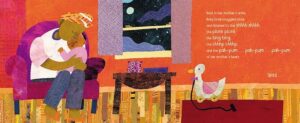
CLICK TO ENLARGE ©illustrations by Oge Mora
DIANNE: You’ve talked elsewhere about drafting on poster board. I love this idea of what you call “taking up space” to write story ideas in a nonlinear format. It’s not something I’ve tried, but it’s easy to see how it keeps the brainstorming process fluid and forces us to imagine our writing in a slightly different way.
Do you have any other helpful tips for writers? Things you fall back on when you’re further along in the process, but still feel stuck?
ANNE: Turning to mentor texts is definitely helpful. And now that my kids are older, I sometimes read my work to them. I love to see how they react and find out what they think will happen next.
One of the best – but hardest – ways to get fresh ideas is to silence outside voices. So, if I’m thinking of taking a walk with a podcast, or cooking while listening to an audiobook – sometimes I force myself to do those things in silence. It gives my mind a chance to wander, and interesting ideas can come out of that. However, I almost never do this because it’s tough – there are so many great books and podcasts to listen to! But I’m working on doing it more often.
DIANNE: You’re branching out into new formats. In addition to writing plays and picture books, you have two board books (HANDS ON! and ONE BIG DAY, both illustrated by Alea Marley, January 2022) and a few more unannounced projects on the way. Do you have a favorite format? What can your readers look forward to next?
ANNE: It’s so hard to pick a favorite! But if I have to, I think I’ll go with board books. I love the feel of them and I have such lovely memories of reading board books to my kids when they were tiny. I enjoy writing under tight parameters, and I don’t know that you can get any tighter than a board book. Super low word counts, the simplest concepts . . . but you still have to think about the adult reader and keep them entertained! It’s a difficult but fun challenge.
I’m currently working on chapter books, and I’m finding that to be really exciting. But I’m still in the writing/drafting/exploring phase with those. Hopefully they’ll make it onto shelves one day because I’d love to share this story and these characters with readers!
In the meantime, readers can expect more picture books. I’ve got a few more coming out, starting with Nell Plants a Tree, which is illustrated by the absolutely wonderful Daniel Miyares and which will be released in winter 2023.
DIANNE: Thanks for joining me on ReaderKidZ, Anne!
***
Learn more about ANNE and her books (including some great writing tips) in these interviews:
Enjoy this interview with illustrator Oge Mora on Diverse Books.Org.








